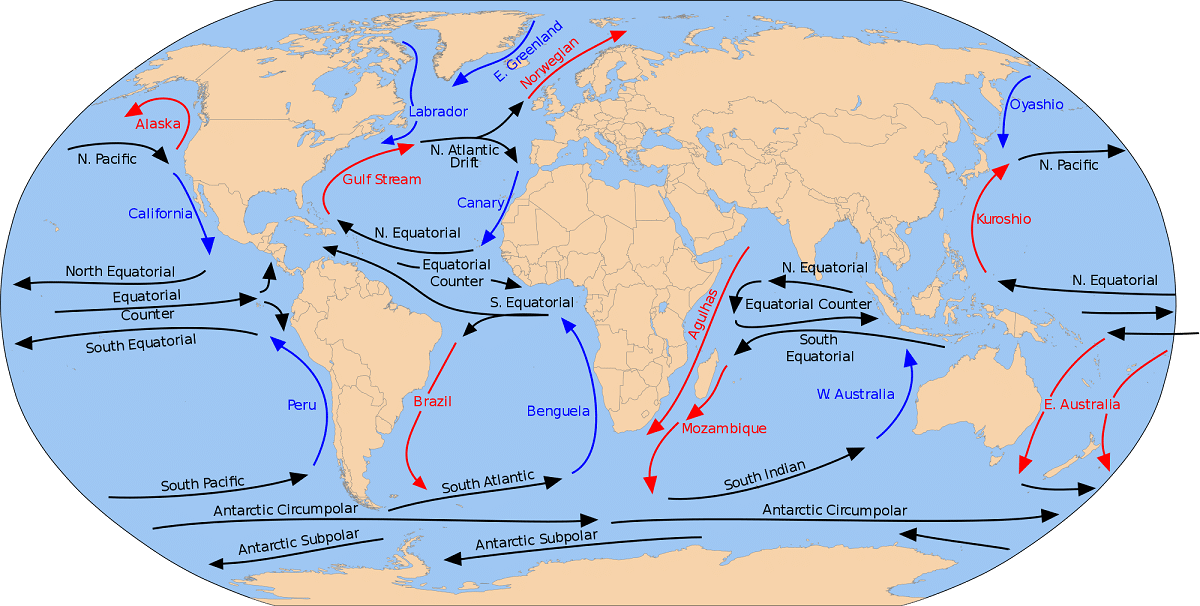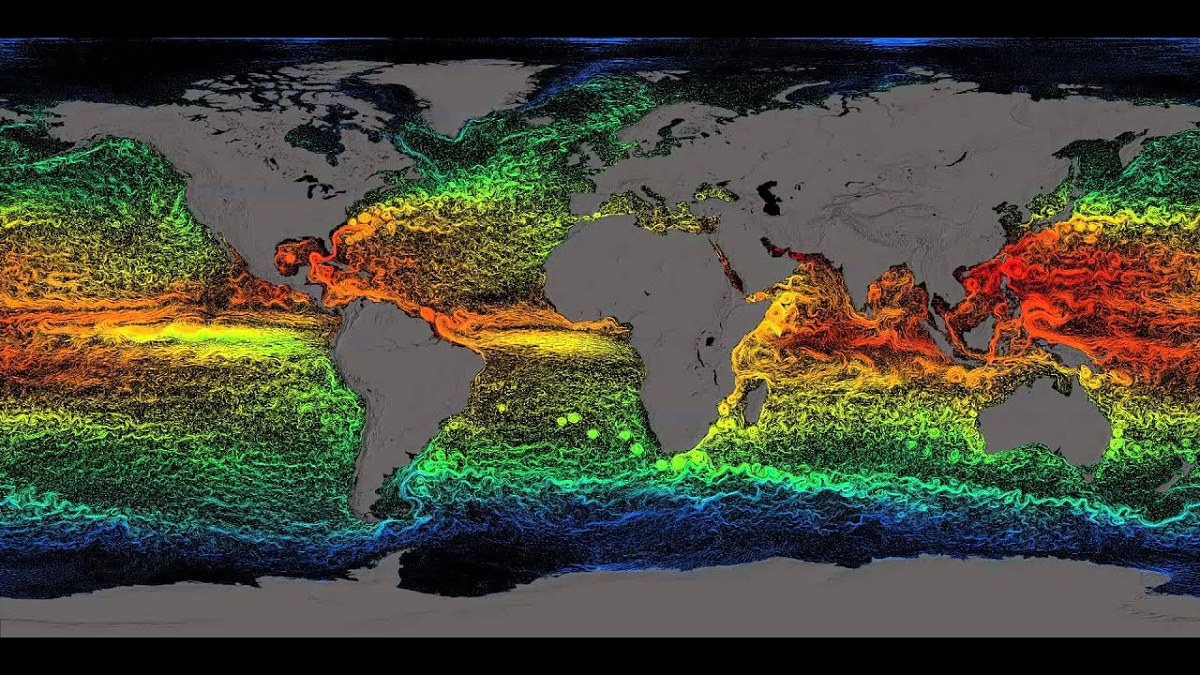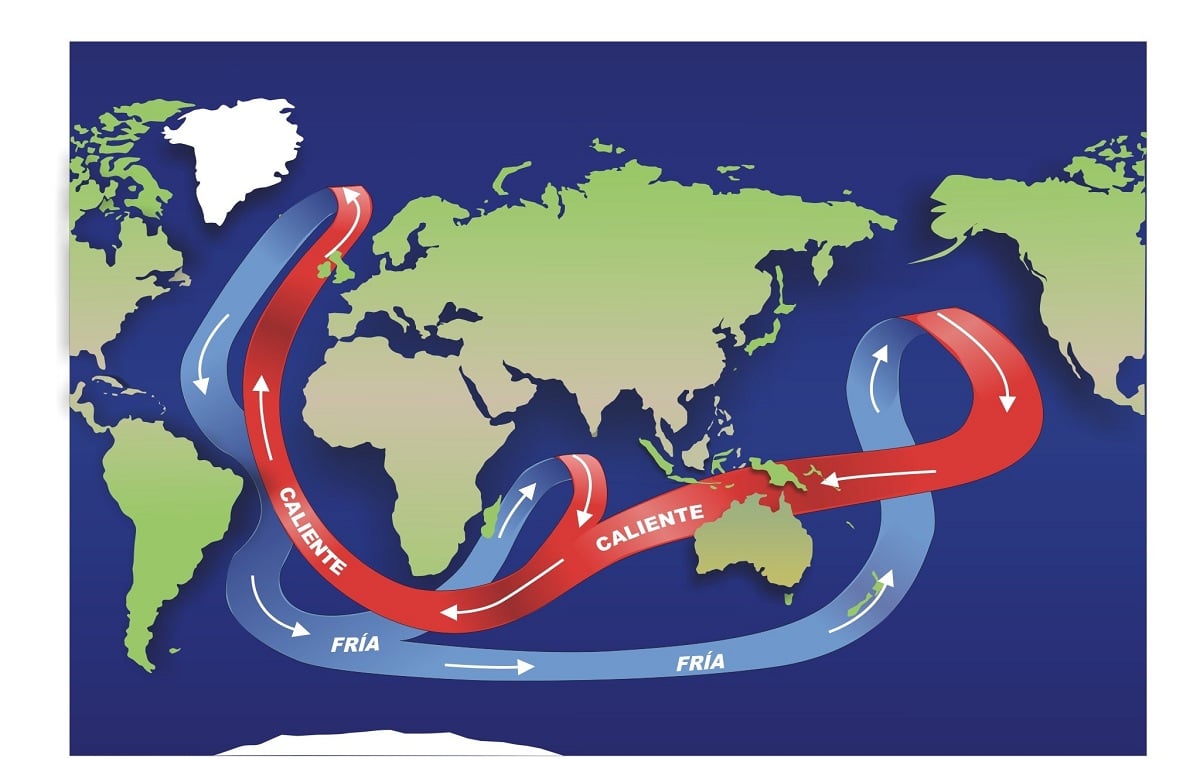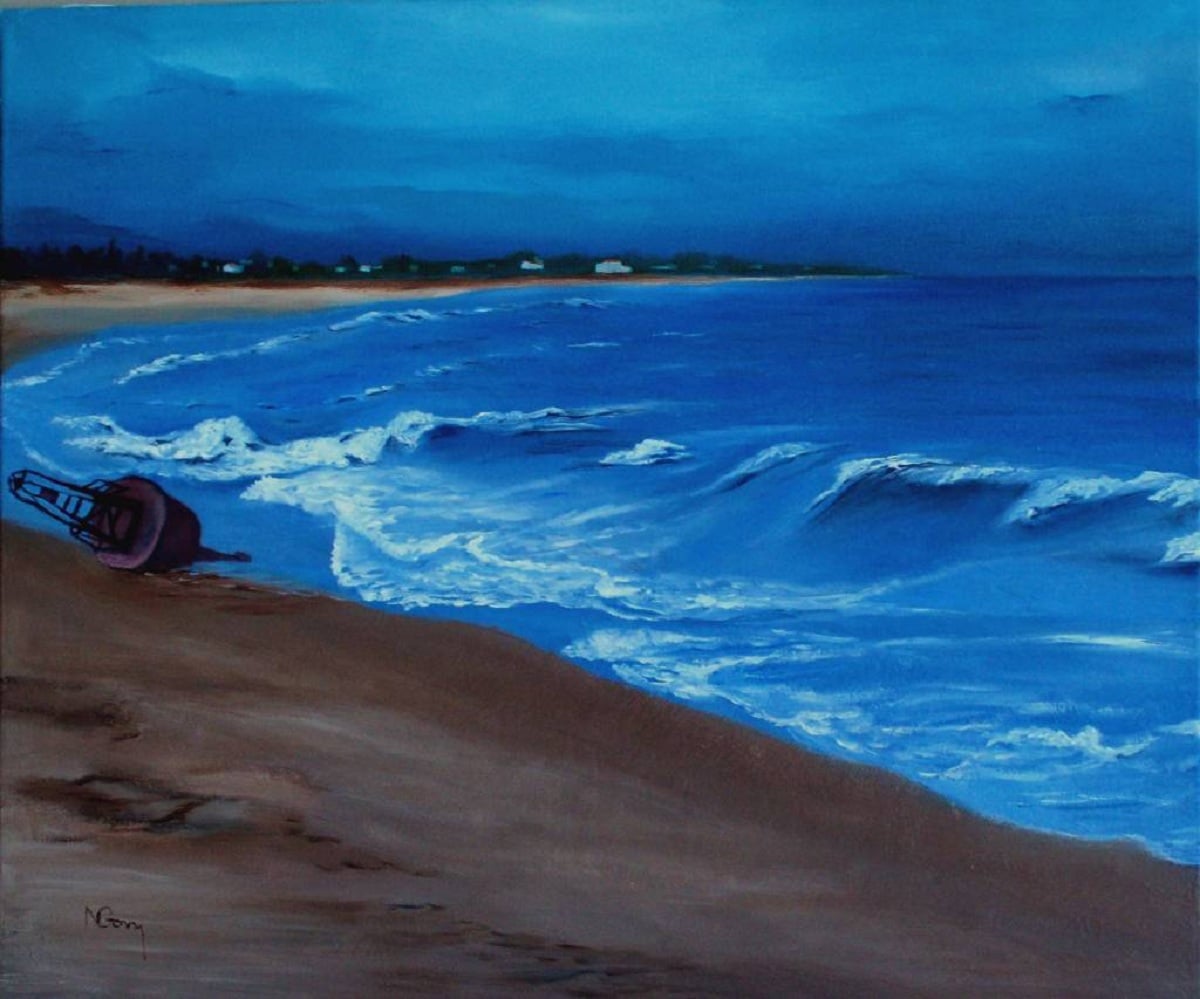
When we talk about the ocean currents We do not refer to those horizontal movements of the waters that belong to the oceans or the great seas. Normally they are measured according to the speed they will move and the m / s or knots are usually used. The study of ocean currents is important in order to know the planet's climate and the transport of energy from one area to another. You have to know that these water movements are driven by factors such as wind, variations in water density and tides.
Therefore, we are going to dedicate this article to tell you everything you need to know about ocean currents, their dynamics and their main characteristics.
Factors of ocean currents

For ocean currents to exist, several factors must act, which are what make them move at a certain speed. These water transports help both the migrations of animals, the transport of energy from one area to another and the regulation of the planet's climate. Among the factors that we find that are the determining factors of the origin of ocean currents are the following: wind, variation of the density of water and tides.
The wind is what drives these ocean currents to move from one area to another. For this to happen, the wind must be close to the surface of the ocean and have enough force to be able to drive the currents that circulate the water through the ocean basins. The variations in water density are mainly due to the salinity of the regions. The movement of water currents due to changes in water density is known as thermohaline circulation. This is colloquially known as an ocean conveyor belt. And it is that here we see that the currents are driven by the density differences of the water due to both the temperature variations and the salinity variations of the regions.
We know that it is not the same to compare the waters of the oceans according to their area. Salinity causes a change in the movement of water. It should be noted that the currents driven under the density differences occur at shallower and deeper levels. They make the water move much slower than tidal currents wind waves. That is, we are not going to see a strong swell for the simple fact that the waters have different densities.
Finally we have the tides. These tides are the rises and falls of the water level depending on the movement of the moon. This displacement of the waters it generates powerful currents especially near the coasts. Normally, these water movements are also affected by the global climate. This is due to the fact that water circulations with warmer temperatures are seen from the equator to other colder areas near the poles.
The Coriolis effect

One of the effects known to be one of the main drivers of ocean currents is the Coriolis effect. Although it is not a movement factor like the others we have named, its performance must be taken into account. Is about a factor of motion that occurs as a consequence of the Earth's rotation. This causes the oceanic waters to rotate and flow towards different regions and directions according to geographic location.
The movement produced by the Coriolis gate will not be the same in all regions of the planet. In areas further from the equator, the movement of ocean currents due to this effect is much slower. However, in the closest areas the waters turn faster. Therefore, we can conclude that the Coriolis effect is responsible for deflecting ocean currents to the right in the northern hemisphere and to the left in the southern hemisphere. The deviation becomes greater as they approach the poles and is zero at the equator.
Types of ocean currents

There are different types of ocean currents according to some main characteristics. Let's see what they are:
Coastal currents
They are those that flow parallel to the coast. They do not usually exceed the speed of a knot, although it is possible to exceed this speed as long as we look inside the swell zone. Normally the intensity of these coastal currents decreases away from the coast. They may present a danger to swimmers and divers entering areas with rocky areas.
Rip currents
They are also known as return currents. These currents are known since the sea tries to find its own level. These currents can rRun distances from 25 meters to a kilometer depending on the strength of the waves. The larger the balls near the shore, the greater the rip currents. It must be taken into account that the force of this current is stronger during the calm of the waves.
The return current is formed by the irregular breaking of the waves along its crest. We must know that the waves before breaking with have a lot of energy of movement. For this reason, this energy returns to the sea through a channel formed by the continuous movement of the waves.
Wind currents
They are those that are also known by the name of surface currents. In this case, it is the wind that is responsible for blowing on the surface layers of the water to move them towards a specific direction. Normally, the speed of the wind currents loses intensity the greater the distance traveled. Too they lose intensity as depth increases. This is because the wind exerts so much force in deep areas. The wind does the job strong enough to be able to influence ocean movements around the world.
The speed of the wind currents depends on the constancy, the duration of the winds and the intensity.
Convection currents
They are those that are partly driven by the winds, although their main characteristic is the variation in water temperatures. This is the same as occurs with convection currents in the Earth's mantle. When there is a difference in temperatures, there is movement to balance the temperature and they are distributed differently.
I hope that with this information you can learn more about ocean currents.